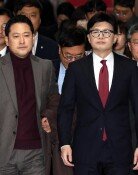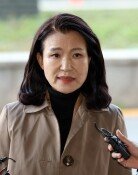Phoenix-ornamented binyeo is a jewelry worn by Joseon’s royal family
Phoenix-ornamented binyeo is a jewelry worn by Joseon’s royal family
Posted November. 03, 2022 07:32,
Updated November. 03, 2022 07:32

A heated altercation broke out between Koreans and Chinese over the bongjam (a binyeo, a Korean traditional ornamental hairpin that has the oriental phoenix as an ornament) that became the subject of attention as K-pop girl band IVE’s Jang Won-yeong wore one at the Paris Fashion Week on Oct. 16. Some Chinese internet users argued that the Chinese culture was stolen. The Korean internet users were frustrated that the Chinese were “persisting, yet again, that Korean culture is theirs."
The bottom line is that Jang mentioned bongjam and said, “I wanted to show Korean traditional style and grace." Binyeo is part of Korean traditional culture that dates back to the ancient Korean Peninsula, and bongjam was a piece of jewelry favored by the Joseon dynasty's royal family. Jo Hyo-sook, a chair professor of the fashion design department at Gachon University, described bongjam as the “representative artifact of the royal family of the Joseon dynasty, which could only be worn by women in the highest rank of the royal family, such as the queen and the king’s mother.”
A binyeo is a hairpin that women use to pin up their long hair. It is a part of the jewelry culture pervasive across East Asia, including Korea, China, and Japan. Samguksagi (the Chronicles of the Three States) writes that in the United Silla, around A.D. 834, where people’s official status was determined based on the bone rank system, women from the true bone rank could not wear pearl ornamented binyeo. Women from the sixth rank could not wear a binyeo ornamented with pure gold.
Bongjam was also a jewelry piece that was beloved by women in high-status positions across the three East Asian countries. In the Joseon dynasty, however, bongjam was worn only at national events, meaning it was taken as the symbol of the dynasty's legitimacy. Seven pieces of bongjam worn by Yi Bangja, the wife of King Euimin of the Korean Empire, are exhibited at the National Palace Museum. “A dragon or apricot-shaped binyeo was worn daily at the palace, but bongjam was worn only on official occasions, such as the marriage of royal family members,” said Curator Seo Jeong-min of the National Palace Museum.
However, the bongjam worn by Jang is not designed after the traditional Korean style. Its features are different from the traditional bongjam worn by the imperial family. Nor does it resemble the Chinese or Japanese style. Professor Jo said that the one worn by Jang is inspired by the traditional Korean binyeo and is recreated in a modern style.
Then in what way a binyeo from Joseon differs from others? Professor Lee Seon-hee of the department of clothing at Suwon University pointed out its “horizontal thickness and lengthiness” as opposed to a not-so-long, vertical design of the Chinese and Japanese-style binyeo.
The unique shape of the Korean-style binyeo originated around 1756 when King Yeongjo of Joseon banned the use of a Korean wig called “gache.” In East Asia, a vertical clip bineyo was widely worn to fixate the gache. However, after King Yeongjo imposed a ban on the use of gache, women in Joseon started to wear a horizontally long and thick binyeo to pin up their high bun updo hairstyle. “A binyeo is a fashion item that can add a style to the combed-back, high bun hair. Joseon binyeo was elongated with time, and the jamdu (the head of the pin) also got thicker and became three-dimensional,” said Professor Lee.
always99@donga.com






![[단독]“권성동, ‘王’자 노리개 등 장식 상자 2개로 1억 받았다”](https://dimg.donga.com/c/138/175/90/1/wps/NEWS/IMAGE/2026/01/22/133211754.1.jpg)
